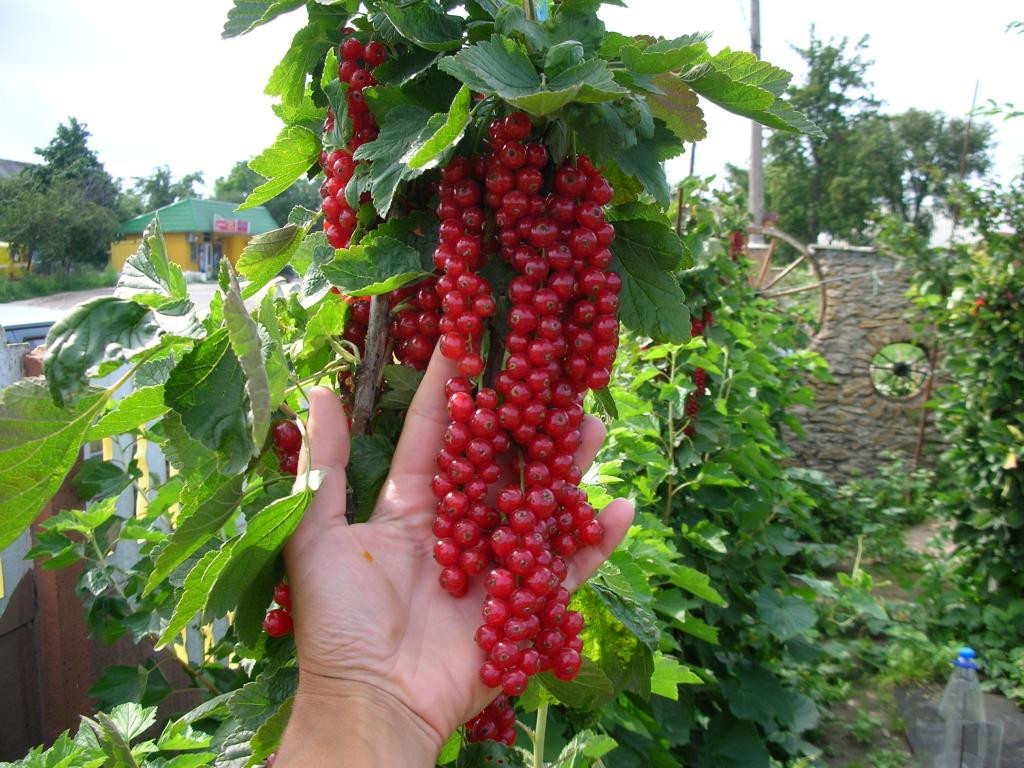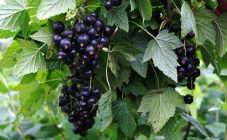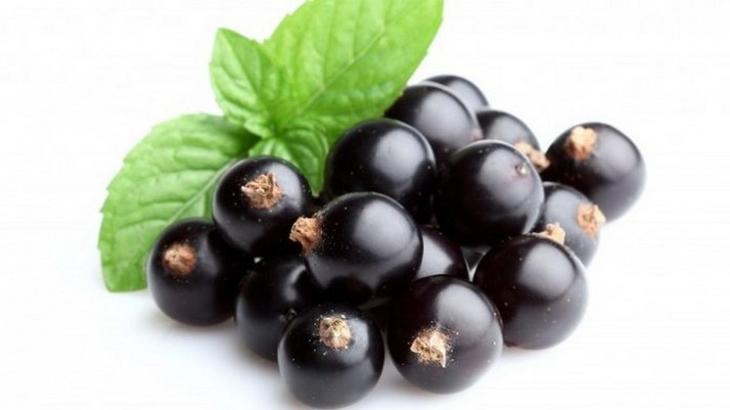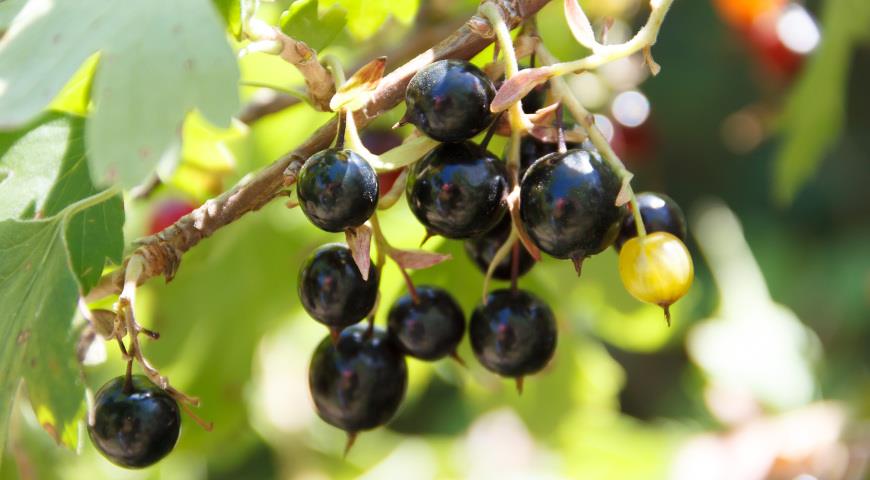Content:
Red currant is a small shrub of the Gooseberry family. Most taxonomists believe that cultivars are complex hybrids. They are created with the participation of rocky, fluffy and common currants.
History of breeding varieties
Red currant varieties are most widespread in Europe, and in Russia, this culture, despite many valuable qualities, is mainly concentrated in home gardening. But these plants have a number of indisputable advantages: good winter hardiness, early ripening of fruits and drought resistance.
The best red currant varieties bred by Dutch breeders:
- Roland, or Roland;
- Rondom;
- Rosette.
Some varieties are of Russian origin:
- Natalie;
- Alpha;
- Tatyana.
There are also types of Latvian and Belarusian selection.
Characteristics of popular varieties
Each variety of red currant has individual characteristics. Thanks to the work of breeders, a large number of good high-yielding species have been bred, intended for cultivation in various climatic zones. People who want to start a currant garden should pay attention to the names presented below.
Rosetta currant: variety description
Shrub up to 1.2 m high, which grows and develops rapidly. The leaf plate is dark green, wrinkled, three-lobed. Fruits are large, moderately sour, ripen in late July - early August. Rosetta currant does not tolerate waterlogging of the soil, but it is demanding on lighting. It is not afraid of frost, therefore it has become widespread in Western Siberia. Average productivity - 3-3.5 kg per bush.
Roland currant: description
The variety is long-leaved, the average yield is 6-7 kg per bush. The berries are quite large - up to 1.5 g. Overripe fruits are very sweet, they are usually eaten fresh. Roland red currant is partially self-fertile, medium-late ripening, resistant to fungal diseases, but susceptible to attacks by currant kidney mites. The bushes are medium in size, compact, with thick branches. Leaves are small, yellowish green. Roland currant is a winter-hardy variety.
Currant Natalie
The plant is powerful, bears rather large fruits (up to 1 year). Mid-season variety, tolerates frost well, resistant to anthracnose and powdery mildew. The average yield of one bush is 4 kg. Differs in high self-fertility. A characteristic feature is the reddish color of the upper part of the shoots.
Can withstand cold temperatures down to -30 ° C. When grown in more severe conditions, it needs additional protection. The shrub will not die from a lack of moisture, but because of this, yield decreases. Berries are not afraid of long-distance transportation. To preserve their presentation, it is better to pack the fruits in small boxes so that the lower layers do not wrinkle.
The fruits are suitable for consumption both fresh and frozen. The taste is sweet and sour. They can be safely added to various dishes, because they do not lose their taste even under the influence of high temperatures.
Currant Rondom
This is a late variety. The shrub is compact, vigorous. Subject to proper agricultural technology, it brings up to 10 kg of berries from a bush, on average this figure is 7-8 kg. Leader in the amount of ascorbic acid. The fruits do not fall off the plant even after full ripening. The average value of the mass of berries is 0.9 g. The varietal feature is resistance to powdery mildew and anthracnose, but the plants sometimes get sick with septoria. They do not die in drought, but bear fruit worse with a lack of moisture.
Alpha currant
Large-fruited variety - berries grow up to 1.5 g. Late-ripening variety, fruits ripen about 2 weeks later than early crops. The bush is medium in size, immune to powdery mildew, and not afraid of frost.
Currant Tatiana
This is a late-ripening variety. The bushes are slightly spreading, they grow actively. The leaves are three-lobed, usually green. They have strong pubescence on the dorsum. Medium-sized fruits - from 0.5 to 0.8 g each. Up to 5 kg of berries can be harvested from one plant. Not afraid of sudden temperature changes, waterlogging of soil and air, due to high self-fertility. Resistant to the harmful effects of diseases and pests.
Winter hardy varieties
Winter-hardy varieties have been developed that can be cultivated in harsh conditions. They love a dry climate and abundant snow cover.
These include:
- 1) The Ural beauty is one of the best of its kind, bears fruit abundantly every year. The berries are very large - up to 1.7 g. The plant is not susceptible to attacks by pests and is immune to fungal diseases;
- 2) Lights of the Urals - a fairly young variety, bred in 2000. The shrub is large, and the berries are of medium size - 0.6-0.7 g. Not susceptible to disease;
- 3) Scarlet dawn - medium ripening, berries grow up to 1 g. It has good productivity, is not afraid of frost.
In addition to the varieties described, experienced gardeners advise paying attention to the Marmalade, Jonker Van Tets, Early Sweet, Summer's Gift, Vika.
Growing features
All red currant plants prefer neutral or slightly acidic soils and are quite demanding on lighting conditions. They can be planted in fall or spring.
The site is pre-dug up, applying the following fertilizers to each square meter:
- 1) 3-4 kg of organic matter;
- 2) 100-150 g of superphosphate;
- 3) 20-30 g of potassium sulfide.
Planting is carried out in holes that are dug in advance so that the earth has time to settle. Each of them is also placed 8-10 kg of humus or peat, 150-200 g of superphosphate and 30-40 g of potassium sulfide.
Planting is carried out by deepening the seedling 6-10 cm above the root collar with abundant watering. Further care is reduced to the formation of plants in the desired way, regular feeding and protective measures. The bushes are rarely watered, because they get enough moisture from the soil. In especially dry periods, you need to pour 3-5 liters of water under one plant. During flowering, bird or cow droppings are introduced. This technique has a positive effect on yield. In the fall, you can feed the currants with humus or peat at the rate of 1 bucket per bush.
When pruning, remove very old (over 6 years old) or drooping branches. The root system of young plants is superficial, so only shallow digging or simply loosening is allowed around them.
The culture can be propagated by layering or lignified cuttings, which are planted in the first decade of September. If you create favorable conditions for the shrub, then it will bear fruit up to 20 years.
Advantages and Disadvantages: Natalie, Tatiana, Rosetta
The most popular varieties that are most often grown in central Russia are Natalie, Tatiana and Rosetta. Each of them has pros and cons.
Benefits of Natalie variety:
- 1) High resistance to diseases and pests;
- 2) Stable productivity;
- 3) Resistance to drought and frost;
- 4) Good keeping quality;
- 5) Versatility.
The disadvantages of this variety include the fact that the branches are spread widely to the sides under the weight of the berries. This nuance must be taken into account when planting and leave additional space between the bushes.
Currant Tatiana has been producing a stable harvest for many years. It is a self-pollinated species, not susceptible to disease, resistant to pest attacks and frost. The yield is slightly lower than that of the Natali variety. The fruits have good transportability. Some gardeners note that the berries are quite small. But this disadvantage is compensated by excellent taste.
Rosetta red currant is a large-fruited and high-yielding variety. Disadvantages - susceptibility to the fungal disease anthracnose and high requirements for soil fertility. Poorly tolerates waterlogging.
Due to the wide variety of species, every gardener will be able to choose the most suitable option for himself.
A valuable quality of red currants is that the fruits do not fall off after they are fully ripe, therefore, by selecting varieties, you can stretch the period of consumption of fresh berries of this culture by 1.5 months. Cultural agrotechnology is quite simple. Due to the fact that the middle zone is characterized by frosty winters, cold-resistant species must be cultivated in this area.




















